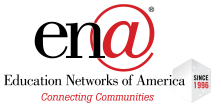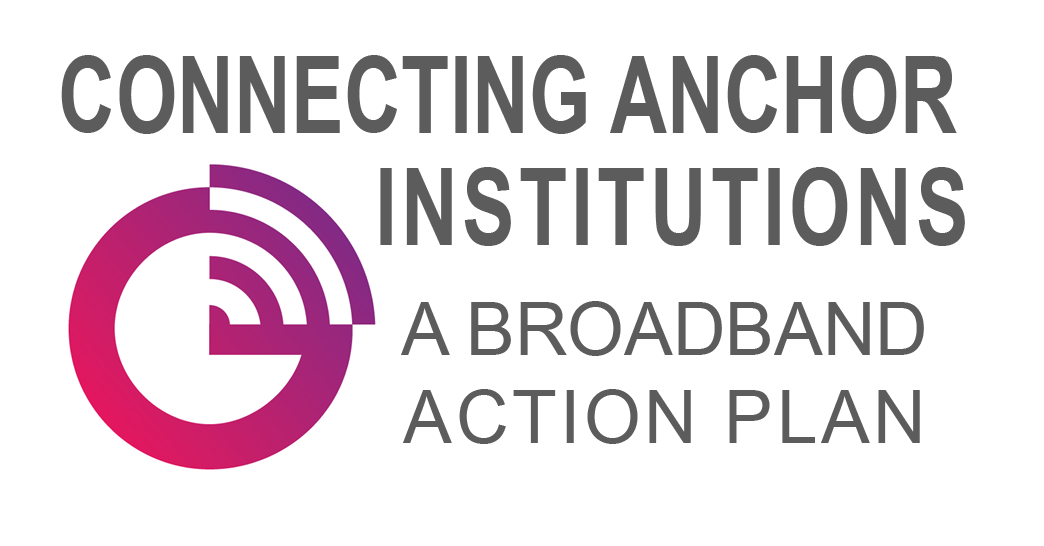Preface
Community anchor institutions (CAIs) need open, affordable, high-capacity broadband connections to the Internet to accomplish their mission and serve the public. High-speed Internet access is essential for learning and education, workforce development, creativity and collaboration, telemedicine, civic engagement, access to e-government services, and a host of other individual and community needs.
Anchor institutions – schools, healthcare providers, libraries, public media outlets, public housing, community centers, community colleges and other institutions of higher education – serve as the gateway to the community. Deploying open, affordable, high-speed broadband connectivity to anchor institutions stimulates economic growth, promotes digital equity and encourages residential broadband adoption.
Unfortunately, the broadband needs of anchor institutions often do not receive the attention they deserve. The broadband industry and policymakers often focus on small businesses and/or residential users and overlook the broadband needs of community anchors. Many schools, libraries, and health clinics, especially those in rural areas, simply cannot afford the broadband connections they need.
Connecting Anchor Institutions: A Broadband Action Plan was developed by the Schools, Health & Libraries Broadband (SHLB) Coalition to provide ideas and actionable policy recommendations for government leaders at the federal, state, and local levels to address the broadband needs of anchor institutions.
The SHLB Coalition is a broad-based organization of anchor institutions, commercial companies and non-profit broadband providers, foundations, public interest groups, and others that work together to develop and support policies to improve broadband connectivity for anchor institutions and their communities in all regions of the country – urban, suburban, and especially rural.
The SHLB Coalition believes that deploying broadband networks to serve anchor institutions is a cost-efficient and vitally-important investment in our nation’s future. Deploying broadband to anchor institutions can improve broadband access to millions of people (students, low-income and elderly people, migrants, etc.) who may not otherwise have access to the Internet. Anchor institution personnel train people about broadband services and technologies, thereby stimulating broadband usage and demand. Furthermore, high-capacity, middle-mile, broadband networks serving community anchor institutions are “jumping off points” to serve surrounding residential and business consumers.
This Action Plan is the first component of our national Grow2Gig+ Campaign, the SHLB Coalition’s effort to make gigabit speeds for anchor institutions a national priority. It is a call to action that brings together policymakers, educators, library and health care leaders, technology experts, and network builders to lead the way.
We want the Action Plan to encourage further research and examination of CAI broadband needs and solutions. On our part, we intend to post additional information, research, and case studies on the Action Plan website and we invite you to contribute your information and join the discussion.
The SHLB Coalition is grateful to a number of parties who generously provided their time and expert insights in preparing this Action Plan. We interviewed the following leading authorities in preparing Connecting Anchor Institutions: A Vision of Our Future. These include Susan Crawford, John A. Reilly Clinical Professor of Law at Harvard Law School and Co-Director of the Berkman Center; Dr. S. Dallas Dance, Superintendent, Baltimore County Public Schools; Sari Feldman, former President, American Library Association, and Executive Director, Cuyahoga County Public Library; and Douglas Levin, Founder and President, EdTech Strategies, LLC.
We are thankful for the dedicated work of the SHLB Broadband Action Plan Steering Committee: Larra Clark (American Library Association); Adrianne Furniss and Kevin Taglang (Benton Foundation); Bob Collie, Lillian Kellogg, and Rex Miller (Education Networks of America); and Susannah Spellman (Internet2/USUCAN).
We give special thanks to the authors who contributed to the SHLB Broadband Action Plan: Amelia Bryne, Kelleigh Cole, Joanne Hovis, Tom Koutsky, Blair Levin, Christine Mullins, Angela Siefer, and Gina Spade. In addition, thank you to the following people for making the project possible: Theresa Stroisch (Brooktana), who served as expert Project Manager; Amy Robinson and Jeff Sharp for their valuable communications and public relations advice; and Emily Olson, SHLB’s Director of Operations, for her top-notch oversight of this project.
We look forward to your support to ensure that community anchor institutions all across America have open, affordable, high-capacity broadband.

John Windhausen, Jr.
Executive Director
SHLB Coalition
Policy Papers
Latest Updates From Twitter
Action Plan Authors
Amelia Bryne
Kelleigh Cole
Joanne Hovis
Tom Koutsky
Blair Levin
Christine Mullins
Angela Siefer
Gina Spade
John Windhausen
Steering Committee
Larra Clark, American Library Association
Adrianne Furniss, Benton Foundation
Kevin Taglang, Benton Foundation
Bob Collie, ENA
Lil Kellogg, ENA
Rex Miller, ENA
Susannah Spellman, Internet2/USUCAN









 Download Full Action Plan
Download Full Action Plan